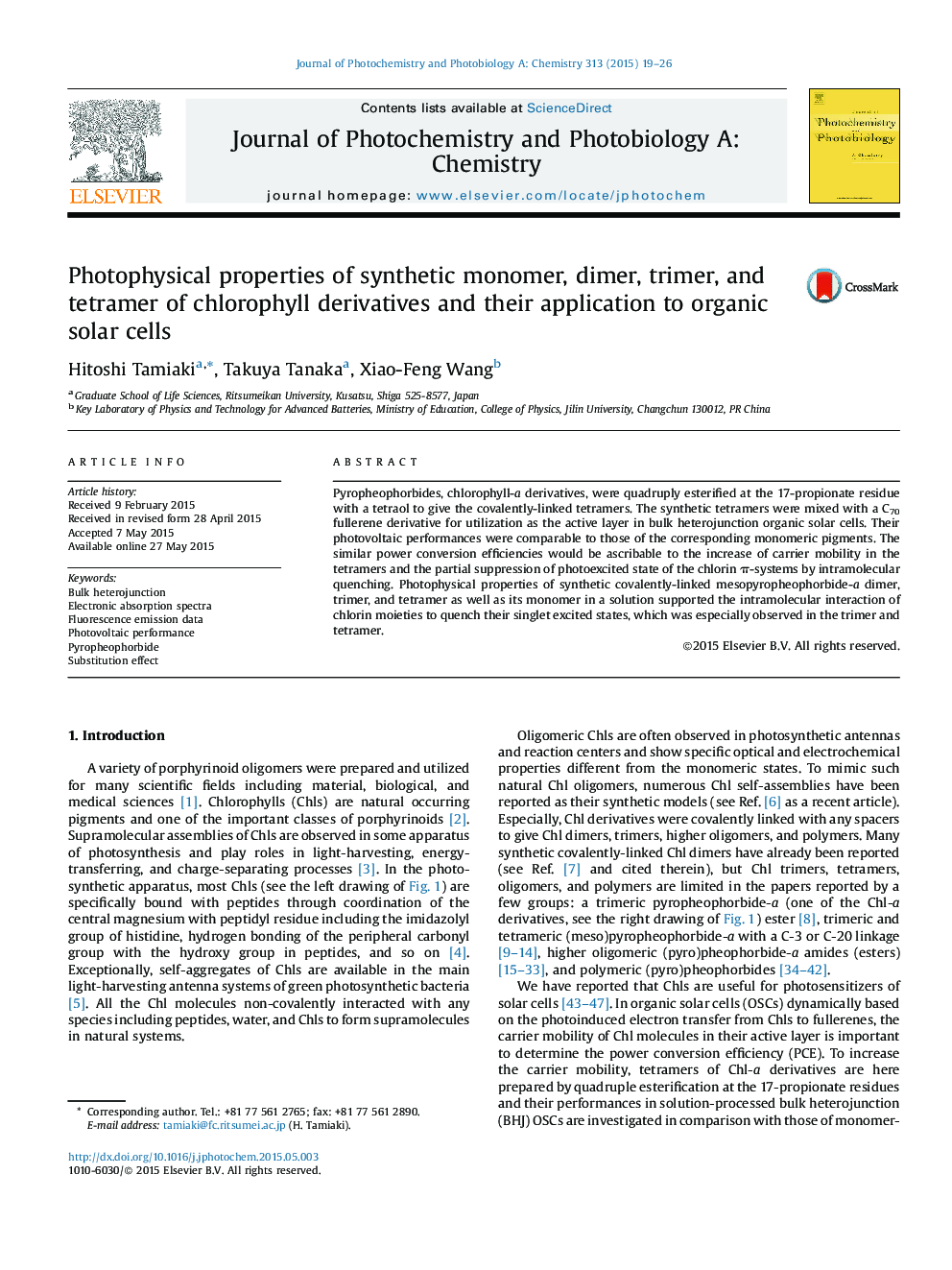| Article ID | Journal | Published Year | Pages | File Type |
|---|---|---|---|---|
| 26461 | Journal of Photochemistry and Photobiology A: Chemistry | 2015 | 8 Pages |
•Oligomeric chlorophyll derivatives were prepared by esterification of 17-propionate.•Solution-processed bulk heterojunction organic solar cells were fabricated.•Planar active layer was constituted of chlorophyll and fullerene derivatives.•Power conversion efficiencies of the solar cells were 1.5% in the best performance.•Intramolecular interaction of chlorin π-moieties were observed in a solution.
Pyropheophorbides, chlorophyll-a derivatives, were quadruply esterified at the 17-propionate residue with a tetraol to give the covalently-linked tetramers. The synthetic tetramers were mixed with a C70 fullerene derivative for utilization as the active layer in bulk heterojunction organic solar cells. Their photovoltaic performances were comparable to those of the corresponding monomeric pigments. The similar power conversion efficiencies would be ascribable to the increase of carrier mobility in the tetramers and the partial suppression of photoexcited state of the chlorin π-systems by intramolecular quenching. Photophysical properties of synthetic covalently-linked mesopyropheophorbide-a dimer, trimer, and tetramer as well as its monomer in a solution supported the intramolecular interaction of chlorin moieties to quench their singlet excited states, which was especially observed in the trimer and tetramer.
Graphical abstractFigure optionsDownload full-size imageDownload as PowerPoint slide
